11 Best Herbal Teas For Lower Back Pain
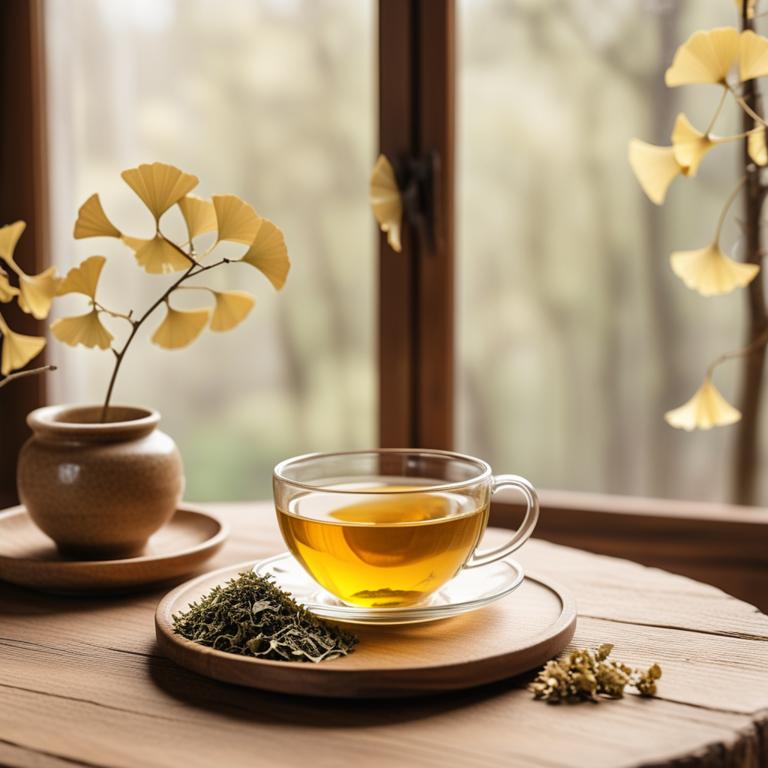
Herbal teas for lower back pain are a natural remedy made from various plant extracts that are used to alleviate discomfort and reduce inflammation in the lower back region.
These teas can treat this ailment due to their anti-inflammatory and pain-relieving properties, which help to soothe and calm the muscles, nerves, and joints.
Some examples of herbal teas that can be used to treat lower back pain include ginger tea, which reduces inflammation and relaxes the muscles, chamomile tea, which calms the nervous system and promotes relaxation, turmeric tea, which contains curcumin that reduces inflammation and pain, dandelion tea, which helps to reduce water retention and alleviate strain on the lower back, and willow bark tea, which contains salicin that reduces pain and inflammation.
Additionally, other herbal teas such as lavender tea, passionflower tea, and valerian root tea can also be used to treat lower back pain due to their calming and relaxing effects.
Related Study
According to "Current drug discovery technologies", teas for lower back pain can be effective in providing relief due to their antioxidant and anti-inflammatory properties, particularly found in green tea which contains Epigallocatechin-3-gallate (EGCG) that suppresses inflammation and oxidative stress.
Below there's a list of the 11 best herbal teas for lower back pain.
Table of Contents
Also, you may be interested in...
Today Free Bonus!
The Ultimate Herb Drying Checklist
(For Long-Lasting Powerful Medicinal Effect)
How to easily dry herbs that don't mold and that keep their strong medicinal power for more than 1 year.
1. Zingiber officinale teas

Zingiber officinale teas, also known as ginger tea, have been traditionally used to treat lower back pain due to its anti-inflammatory and analgesic properties.
The bioactive constituents, such as gingerols and shogaols, in this herbal preparation help to reduce inflammation and pain in the lower back by inhibiting the production of pro-inflammatory enzymes and interacting with pain receptors.
By reducing muscle spasms and inflammation, ginger tea provides relief from lower back pain and promotes relaxation.
Regular consumption of ginger tea has been found to provide benefits in reducing lower back pain, improving mobility, and enhancing overall well-being.
Related Study
According to "Current drug discovery technologies", Zingiber officinale teas may be effective in managing lower back pain, particularly sciatica, due to its anti-inflammatory, analgesic, and antinociceptive properties.
Recipe:
- Gather 1 cup of fresh ginger root (about 3-4 inches long).
- Peel the ginger root and slice it thinly.
- In a saucepan, boil 1 cup of water.
- Add 1-2 tablespoons of sliced ginger to the boiling water and reduce heat.
- Steep the ginger in the water for 5-7 minutes, then strain and drink.
Zingiber officinale teas can be an effective alternative remedy for lower back pain, but possible side effects include stomach upset, nausea, and diarrhea due to its high ginger content, as well as interaction with blood thinners and antacids.
To minimize potential risks, it is recommended to consume Zingiber officinale teas in moderation, ideally in small amounts (about 250-500mg of ginger per day), and avoid consuming it on an empty stomach or mixing it with other medications that may interact with its active compounds.
Zingiber Officinale Tea on Amazon
FGO Organic Ginger Tea, 100 Count, Eco-Conscious Tea Bags, Caffeine Free, Packaging May Vary (Pack of 1)
Disclaimer: We earn a commission if you click this link and make a purchase at no additional cost to you.
2. Curcuma longa teas
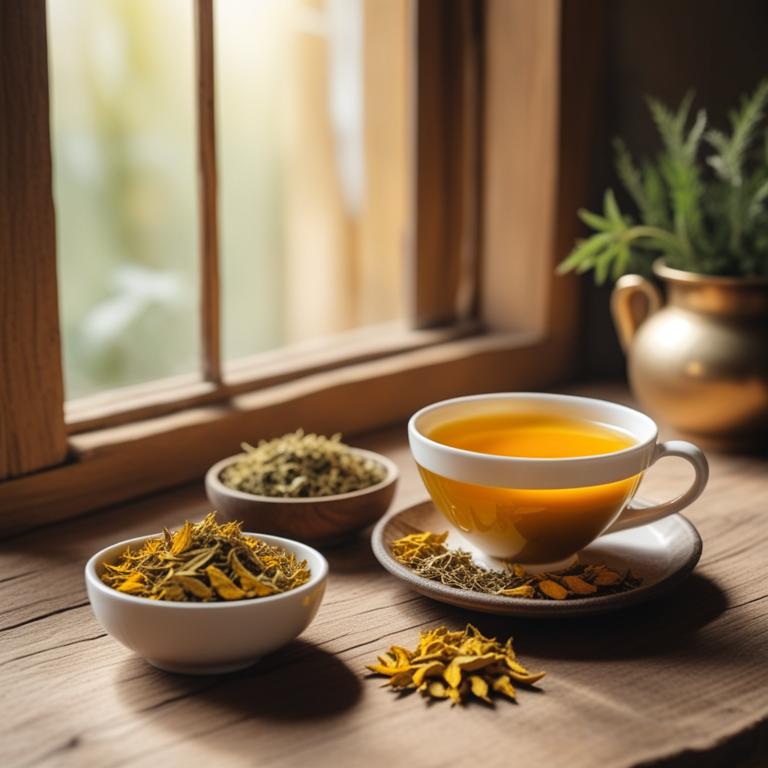
Curcuma longa teas, a traditional herbal preparation, have been used to treat lower back pain due to their anti-inflammatory and analgesic properties, which help to reduce pain and inflammation in the affected area.
The bioactive constituents of Curcuma longa, including curcumin, demethoxycurcumin, and bisdemethoxycurcumin, are responsible for its therapeutic effects, which include reducing oxidative stress and modulating inflammatory pathways.
By reducing inflammation and promoting healing, Curcuma longa teas can help to alleviate lower back pain and improve overall quality of life.
The benefits of using Curcuma longa teas to treat lower back pain include reduced pain and stiffness, improved mobility, and a decrease in the use of pain medication, making it a natural and effective alternative for managing this common ailment.
Recipe:
- Gather 1 teaspoon of dried Curcuma longa root powder and 1 cup of boiling water.
- Steep the powder in the boiling water for 5-7 minutes to create a tea.
- Strain the tea into a cup using a fine-mesh sieve or cheesecloth.
- Add 1 tablespoon of honey to the tea, if desired, to help with taste and soothe the throat.
- Drink the tea warm or at room temperature, 2-3 times a day, to help alleviate lower back pain.
Curcuma longa teas can be used to treat lower back pain, but possible side effects may include stomach upset, diarrhea, and nausea due to its high content of curcumin, a compound that can irritate the digestive system.
To use Curcuma longa teas safely, it is recommended to start with a small dose, drink plenty of water, and avoid taking it on an empty stomach to minimize the risk of gastrointestinal side effects.
Curcuma Longa Tea on Amazon
Pure Ceylon Turmeric Brew - 100% Organic Ceylon Turmeric Tea Bags (40 Sachets - pack of 2 – 20 COUNT PER BOX)
Disclaimer: We earn a commission if you click this link and make a purchase at no additional cost to you.
3. Glycyrrhiza glabra teas

Glycyrrhiza glabra teas, derived from the roots of the licorice plant, have been traditionally used to treat lower back pain.
The anti-inflammatory and analgesic properties of this herbal preparation help to reduce pain and inflammation in the lower back region, thereby providing relief from the discomfort.
The bioactive constituents, including glycyrrhizin, flavonoids, and saponins, present in Glycyrrhiza glabra teas, contribute to their therapeutic effects by reducing oxidative stress and modulating the immune response.
Regular consumption of Glycyrrhiza glabra teas has been found to offer numerous benefits in managing lower back pain, including reduced pain intensity, improved sleep quality, and enhanced overall well-being.
Recipe:
- Gather ingredients: 1 cup of water, 1 tablespoon of dried Glycyrrhiza glabra root, and honey (optional).
- Heat the water in a pot and bring it to a boil.
- Add the dried Glycyrrhiza glabra root to the boiling water and reduce heat to a simmer.
- Let the mixture steep for 5-7 minutes, then strain the tea into a cup.
- Add honey to taste, if desired, and drink the tea to help with lower back pain.
Glycyrrhiza glabra teas can be used to treat lower back pain, but they may cause side effects such as headaches, dizziness, and insomnia due to its stimulant properties and potential interactions with other medications.
To use Glycyrrhiza glabra teas safely, it is recommended to start with a small dose, avoid taking it for extended periods, and be aware of its potential to increase blood pressure and potassium levels, which may be problematic for individuals with pre-existing hypertension or kidney problems.
Glycyrrhiza Glabra Tea on Amazon
Pukka Herbal Teas Licorice and Cinnamon - 20 Bags, 20 Count
Disclaimer: We earn a commission if you click this link and make a purchase at no additional cost to you.
4. Valeriana officinalis teas
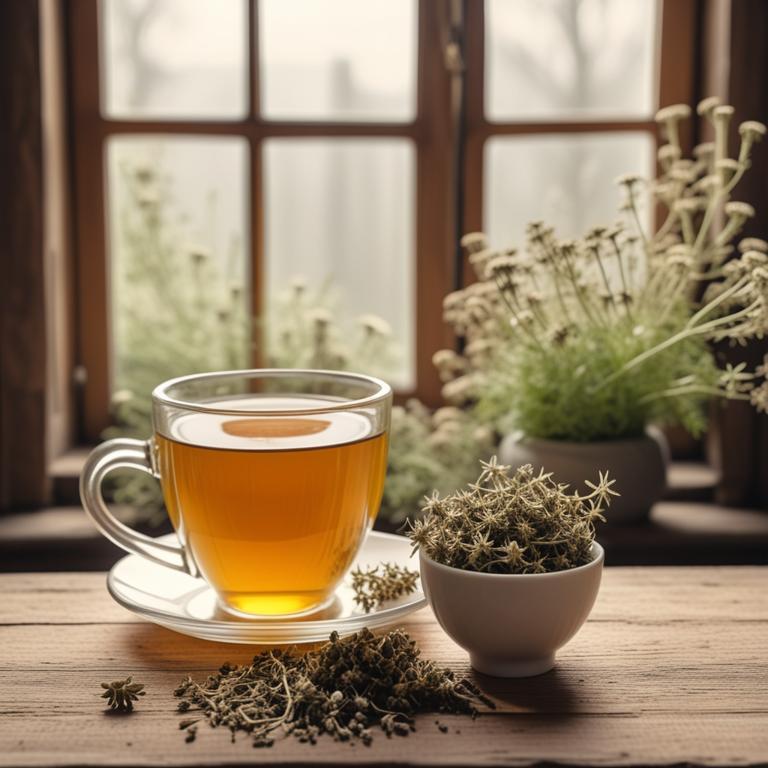
Valeriana officinalis teas have been traditionally used to treat lower back pain due to their analgesic, anti-inflammatory, and sedative properties, which help to reduce pain and discomfort.
The bioactive constituents of Valeriana officinalis, including valerenic acid, isovaleric acid, and valepotriates, contribute to its therapeutic effects by interacting with the nervous system to reduce pain perception.
By reducing muscle tension and promoting relaxation, Valeriana officinalis teas help to alleviate lower back pain, enabling individuals to enjoy a better quality of life.
The benefits of using Valeriana officinalis teas to treat lower back pain include reduced pain intensity, improved sleep quality, and enhanced overall well-being.
Related Study
According to "World journal of plastic surgery", Valeriana officinalis teas for lower back pain may be beneficial due to the significant decrease in pain score observed in the acute phase in rats that received valerian root extract, and an even greater reduction in pain score in both acute and chronic phases in rats that received a combination of valerian root and turnip extracts.
Recipe:
- Gather 1 cup of water and 2 tablespoons of dried Valeriana officinalis root.
- Heat the water in a pot over low heat.
- Add the dried root to the water and let it simmer for 5-7 minutes.
- Strain the tea into a cup and discard the root.
- Drink the tea 2-3 times a day for relief from lower back pain.
Valeriana officinalis teas can be effective in treating lower back pain, but possible side effects may include drowsiness, stomach upset, and interactions with other medications due to its sedative properties.
To use Valeriana officinalis teas safely, take it in moderation, avoid driving or operating heavy machinery, and be aware that its effects can last for several hours, so it's best to consume it at night or early in the day.
Valeriana Officinalis Tea on Amazon
Frontier Co-op Cut and Sifted Valerian Root 1lb, Kosher - for Valerian Root Tea, DIY Supplement Capsules, Bedtime Formulas and Sleep Pillows
Disclaimer: We earn a commission if you click this link and make a purchase at no additional cost to you.
5. Camellia sinensis teas
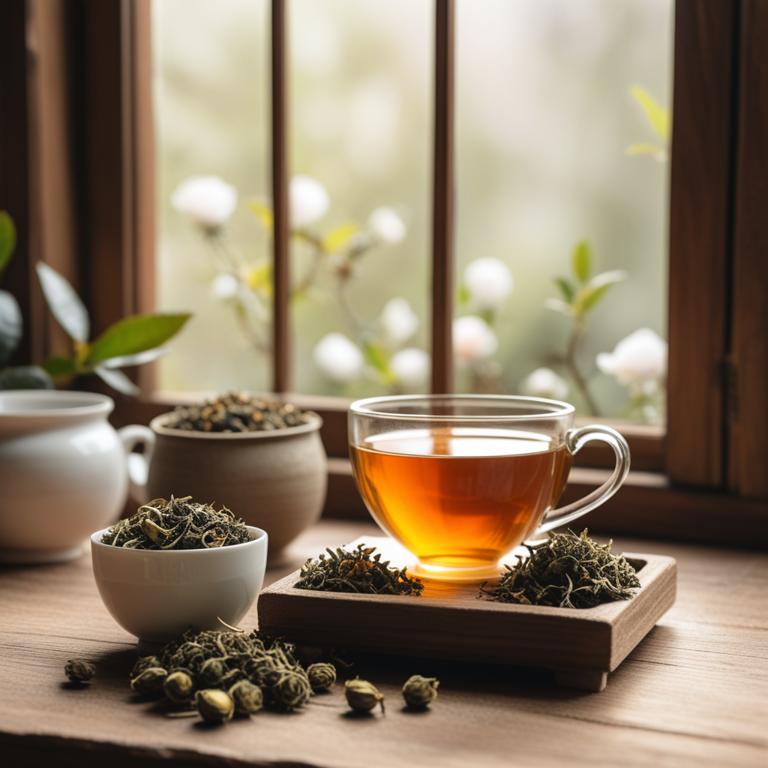
Camellia sinensis teas have been used for centuries to treat lower back pain due to their anti-inflammatory and analgesic properties.
The herbal preparation contains bioactive constituents such as theaflavins and thearubigins, which help to reduce inflammation and relieve pain in the lower back.
These compounds work by inhibiting the production of pro-inflammatory enzymes and blocking the action of pain receptors, thereby providing relief from lower back pain.
Regular consumption of Camellia sinensis teas has been shown to improve lower back pain symptoms and enhance overall quality of life, making it a popular natural remedy for this common ailment.
Recipe:
- Gather 1 teaspoon of Camellia sinensis tea leaves and 1 cup of boiling water.
- Steep the tea leaves in the boiling water for 3-5 minutes.
- Strain the tea into a cup and discard the leaves.
- Add 1 tablespoon of honey (optional) to the tea and stir well.
- Drink the tea slowly and enjoy. Repeat as needed for lower back pain relief.
Camellia sinensis teas can provide relief from lower back pain, but possible side effects may include dizziness, nausea, and stomach upset due to its high caffeine content and other compounds.
Precautions to take when using Camellia sinensis teas to treat lower back pain include drinking it in moderation, avoiding excessive consumption, and being mindful of individual caffeine sensitivity to minimize potential side effects.
Camellia Sinensis Tea on Amazon
Ito En Traditional Matcha Green Tea 50 Count Zero Calories, Caffeinated
Disclaimer: We earn a commission if you click this link and make a purchase at no additional cost to you.
6. Achillea millefolium teas
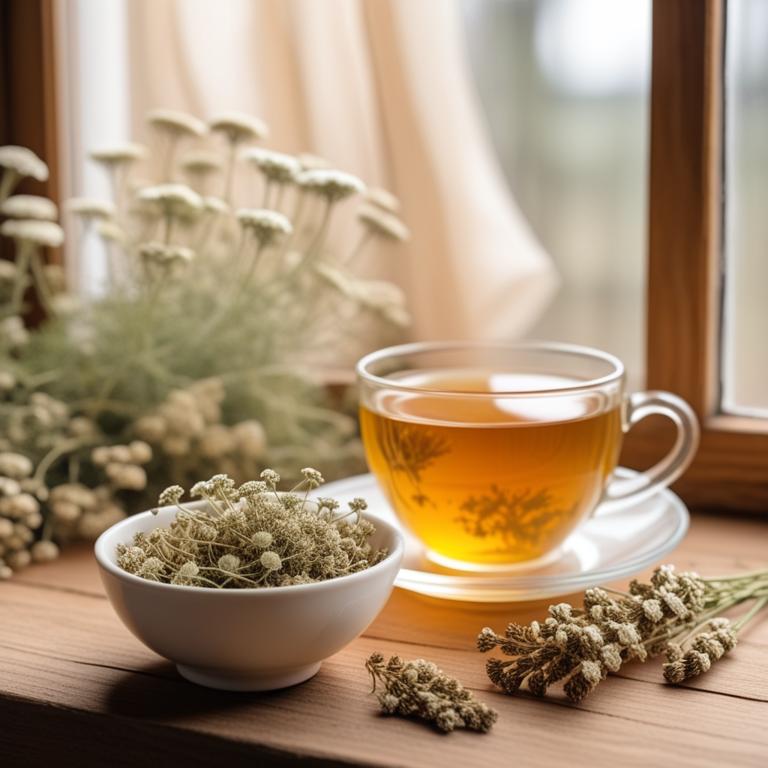
Achillea millefolium teas, also known as yarrow teas, have been traditionally used to treat lower back pain due to their anti-inflammatory, antispasmodic, and analgesic properties.
The bioactive constituents of yarrow teas, including flavonoids, sesquiterpenes, and phenolic acids, help to reduce inflammation and relax muscles, thereby alleviating lower back pain.
The antispasmodic properties of yarrow teas help to prevent muscle spasms and cramps, while the analgesic properties provide relief from pain and discomfort.
The benefits of using yarrow teas to treat lower back pain include natural relief from pain and inflammation, improved mobility, and reduced reliance on pharmaceutical medications.
Recipe:
- Get 1 cup of fresh or dried Achillea millefolium leaves. You can find them in health food stores or online.
- Measure 1 tablespoon of the leaves and put them in a clean cup.
- Pour 1 cup of boiling water over the leaves and let it steep for 5-7 minutes.
- Strain the liquid into another cup and discard the leaves.
- Drink 1 cup of the tea 2-3 times a day for lower back pain relief.
Achillea millefolium teas can be used to treat lower back pain, but it may cause some side effects, including stomach upset, nausea, and diarrhea due to its potential interaction with other medications or digestive issues.
Precautions should be taken when using this herbal preparation, such as starting with a low dose, drinking plenty of water, and avoiding it if you have sensitive stomach or allergies.
Achillea Millefolium Tea on Amazon
Biokoma Pure and Organic Yarrow Dried Herb 30 Tea Bags 1.5oz In Resealable Moisture Proof Pouch, USDA Certified Organic - Herbal Tea, No Additives, No Preservatives, No GMO, Kosher
Disclaimer: We earn a commission if you click this link and make a purchase at no additional cost to you.
7. Ginkgo biloba teas
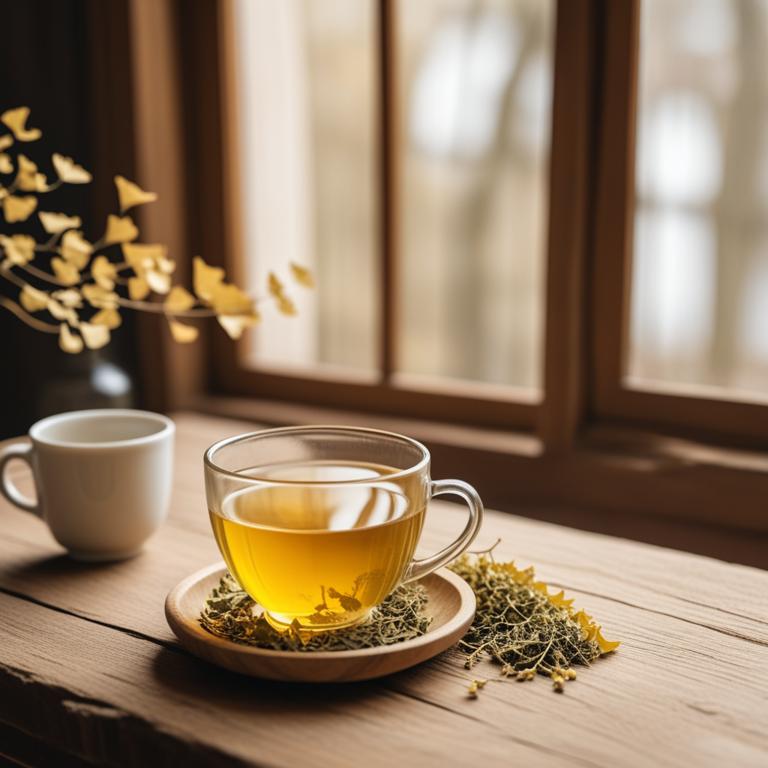
Ginkgo biloba teas have been widely used to treat lower back pain due to their anti-inflammatory and antioxidant properties, which help to reduce pain and inflammation in the affected area.
The bioactive constituents of Ginkgo biloba, including flavonoids and terpenoids, work together to inhibit the production of pro-inflammatory enzymes and scavenge free radicals, thereby alleviating pain and discomfort.
Regular consumption of Ginkgo biloba teas has been shown to improve blood circulation, reduce muscle spasms, and promote relaxation, ultimately providing relief from lower back pain.
The benefits of using Ginkgo biloba teas to treat lower back pain include reduced reliance on pain medication, improved mobility, and enhanced overall well-being.
Related Study
According to "American journal of health-system pharmacy : AJHP : official journal of the American Society of Health-System Pharmacists", Ginkgo biloba teas have been identified as a potentially safe herbal therapy for lower back pain, with clinical trials suggesting its efficacy in treating circulatory disturbances and potentially alleviating lower back pain symptoms.
Recipe:
- Gather 1 tablespoon of dried Ginkgo biloba leaves and 1 cup of boiling water.
- Add the Ginkgo biloba leaves to a tea infuser or a heat-resistant cup.
- Pour the boiling water over the Ginkgo biloba leaves and let it steep for 5-7 minutes.
- Strain the tea into another cup and discard the leaves.
- Drink 1-2 cups of the Ginkgo biloba tea 2-3 times a day to help relieve lower back pain.
Ginkgo biloba teas can help alleviate lower back pain, but possible side effects may include dizziness, headaches, and stomach upset due to its blood-thinning properties.
When using Ginkgo biloba teas, it is essential to take precautions such as starting with low doses, avoiding consumption with other medications, and not using it as a substitute for medical treatment, especially for severe or chronic back pain.
Ginkgo Biloba Tea on Amazon
Tai Chi Think Sharp Energizing Tea (Ginseng Ginkgo Biloba) 12 Bags
Disclaimer: We earn a commission if you click this link and make a purchase at no additional cost to you.
8. Lavandula angustifolia teas

Lavandula angustifolia teas, also known as English lavender tea, have been traditionally used to treat lower back pain due to its anti-inflammatory and analgesic properties.
This herbal preparation contains bioactive constituents such as linalool and linalyl acetate, which have been shown to help reduce pain and inflammation in the lower back region.
By consuming Lavandula angustifolia teas, individuals can experience relief from lower back pain as it helps to relax the muscles, reduce muscle spasms, and promote better sleep quality.
The benefits of this herbal preparation include improved sleep patterns, reduced stress levels, and alleviation of chronic lower back pain, making it a natural and effective remedy for this common ailment.
Recipe:
- Gather ingredients: 1 cup of fresh Lavandula angustifolia flowers, 1 cup of boiling water, and a tea infuser.
- Measure 1 tablespoon of fresh Lavandula angustifolia flowers and put them in the tea infuser.
- Pour boiling water over the flowers in the tea infuser and let it steep for 5-7 minutes.
- Strain the tea into a cup and discard the flowers. Add honey to taste, if desired.
- Drink the tea 2-3 times a day to help alleviate lower back pain.
Lavandula angustifolia teas can be used to treat lower back pain, but it may cause side effects such as drowsiness, headaches, and stomach upset in some individuals.
To use Lavandula angustifolia teas safely, it's recommended to start with a small dose, avoid driving or operating heavy machinery, and be cautious when consuming it with other medications or substances that can interact with it.
Lavandula Angustifolia Tea on Amazon
Tiesta Tea - Lavender Chamomile Herbal Tea | Loose Leaf | Calming Blend with Chamomile and Lavender | Caffeine-Free Herbal | Great for Hot or Iced Brews | Resealable Bulk Pouch, 200 Cups | 8 Ounce
Disclaimer: We earn a commission if you click this link and make a purchase at no additional cost to you.
9. Cinchona officinalis teas
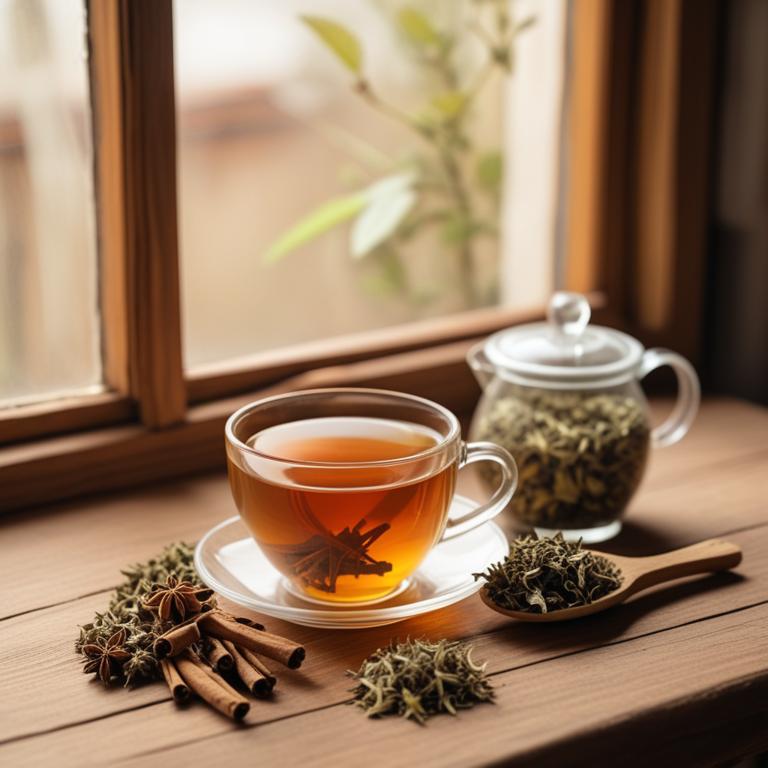
Cinchona officinalis teas have been used for centuries to treat lower back pain, a common ailment affecting millions worldwide.
The anti-inflammatory and analgesic properties of Cinchona officinalis teas help to reduce pain and inflammation in the lower back, providing relief from discomfort and stiffness.
The bioactive constituents of Cinchona officinalis teas, including quinine and alkaloids, contribute to its therapeutic effects by inhibiting the production of pro-inflammatory enzymes and blocking pain pathways in the body.
Regular consumption of Cinchona officinalis teas may also help to improve circulation, reduce muscle spasms, and promote relaxation, ultimately alleviating lower back pain and promoting overall well-being.
Recipe:
- Gather 2 tablespoons of dried Cinchona officinalis bark.
- Heat 1 cup of water in a pot and bring to a boil.
- Add the 2 tablespoons of dried Cinchona officinalis bark to the boiling water.
- Reduce heat and let it simmer for 5-7 minutes.
- Strain the tea and drink while warm, up to 3 times a day for lower back pain.
Cinchona officinalis teas can be an effective remedy for lower back pain, but they may cause side effects such as dizziness, nausea, and stomach upset in some individuals due to their high quinine content.
To safely use Cinchona officinalis teas for lower back pain, take precautions such as starting with small doses, avoiding excessive consumption, and being aware of individual sensitivities to quinine and other ingredients.
Cinchona Officinalis Tea on Amazon
Quina Roja(chinona) & Palo de Víbora Tea – 100% Natural, Vegan, Hecho en México | 25 Tea Bags
Disclaimer: We earn a commission if you click this link and make a purchase at no additional cost to you.
10. Hypericum perforatum teas
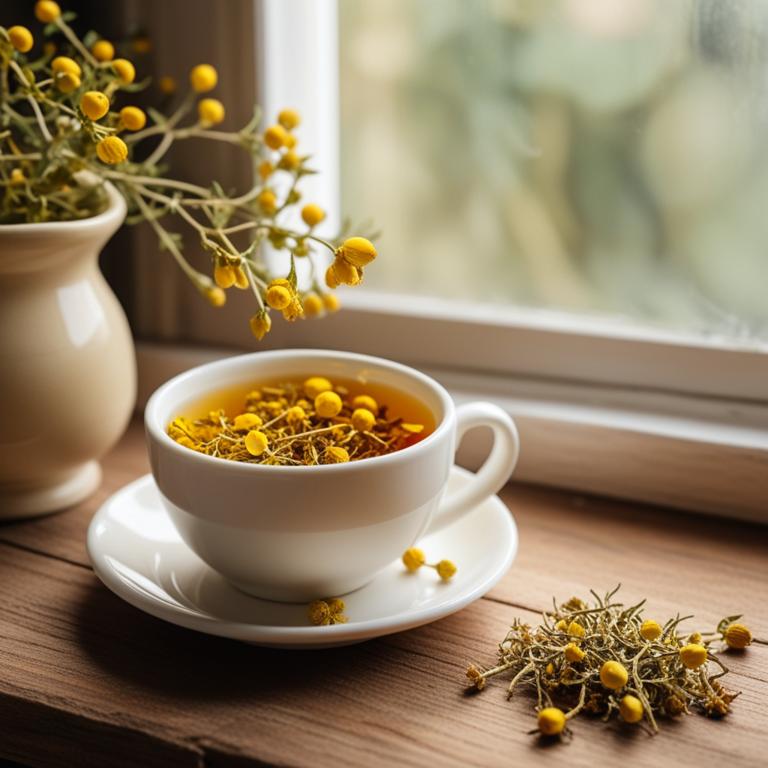
Hypericum perforatum teas, also known as St. John's Wort, have been traditionally used to treat lower back pain due to their anti-inflammatory and analgesic properties.
The bioactive constituents of Hypericum perforatum, including hyperforin and hypericin, have been found to help reduce inflammation and relieve pain in the lower back area.
By reducing inflammation and promoting relaxation, Hypericum perforatum teas can help alleviate lower back pain and improve overall well-being.
The benefits of using Hypericum perforatum teas to treat lower back pain include reduced pain and inflammation, improved mood, and enhanced quality of life.
Recipe:
- Gather 1 cup of fresh or dried Hypericum perforatum leaves.
- Measure 1 tablespoon of the leaves and place them in a heat-resistant cup.
- Boil 1 cup of water in a kettle or on the stove.
- Pour the boiling water over the leaves in the cup and let it steep for 5-10 minutes.
- Strain the tea and discard the leaves. Drink the tea 2-3 times a day for lower back pain relief.
Hypericum perforatum teas can be used to treat lower back pain, but possible side effects may include dizziness, stomach upset, and allergic reactions, especially when taken in large quantities or combined with other medications.
To use Hypericum perforatum teas safely, it is essential to start with small doses and gradually increase as needed, and be cautious when consuming them for extended periods, as prolonged use may lead to increased sensitivity to sunlight and interact with other medications.
Hypericum Perforatum Tea on Amazon
Horbäach St Johns Wort Tincture | 2 Fl Oz | Alcohol Free | Vegetarian Liquid Extract | Non-GMO, Gluten Free Supplement
Disclaimer: We earn a commission if you click this link and make a purchase at no additional cost to you.
11. Avena sativa teas
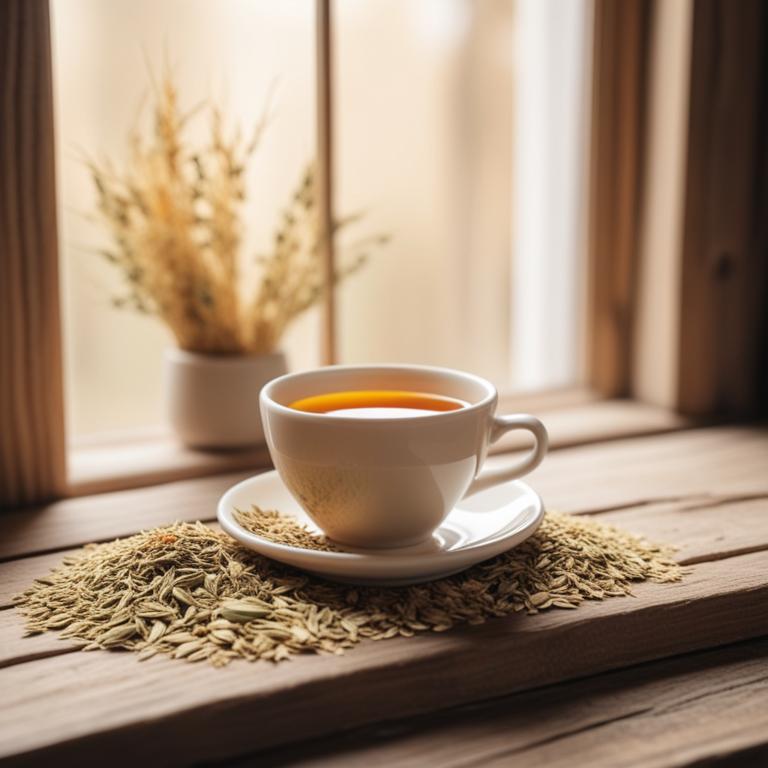
Avena sativa teas, made from the oat plant, are a natural herbal remedy used to alleviate lower back pain.
The anti-inflammatory and relaxing properties of this herbal preparation help to treat lower back pain by reducing muscle tension and promoting relaxation.
The bioactive constituents, including avenalol, avenacoside, and avenanthramides, work together to reduce inflammation, soothe muscle spasms, and improve blood flow to the affected area.
By using Avena sativa teas, individuals can experience numerous benefits, including reduced pain, improved sleep, and enhanced overall well-being.
Recipe:
- Gather 1 cup of dried Avena sativa (oat straw) and a tea infuser or a piece of cheesecloth.
- Boil 2 cups of water in a pot and let it cool for 1 minute.
- Add 2 tablespoons of dried Avena sativa to the tea infuser or cheesecloth.
- Steep the Avena sativa in the water for 5-7 minutes, then strain the liquid into a cup.
- Drink the tea 2-3 times a day to help relieve lower back pain.
Avena sativa teas can be used to treat lower back pain, but possible side effects include drowsiness, headaches, and stomach upset due to its sedative and anti-inflammatory properties.
When using Avena sativa teas to treat lower back pain, precautions to take include drinking it in moderation, avoiding it before driving or operating heavy machinery, and monitoring your body's sensitivity to its effects.
Avena Sativa Tea on Amazon
4 oz. Oatstraw Tea Oat Straw Herb Tea Loose Leaf (Avena sativa L.) - 113g Oat Straw Herb Hierba de paja de avena
Disclaimer: We earn a commission if you click this link and make a purchase at no additional cost to you.